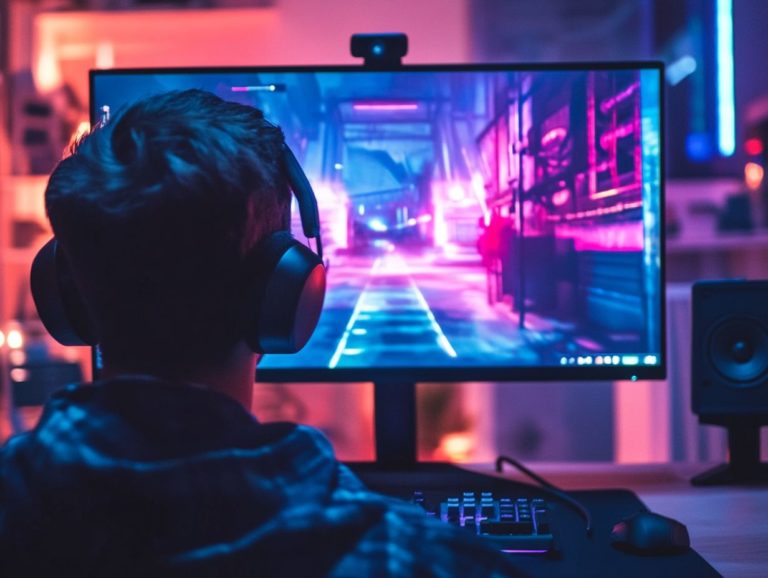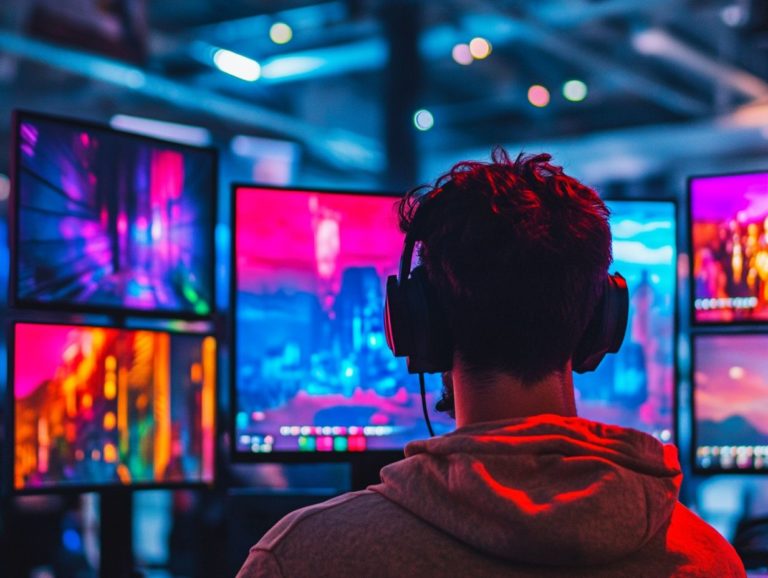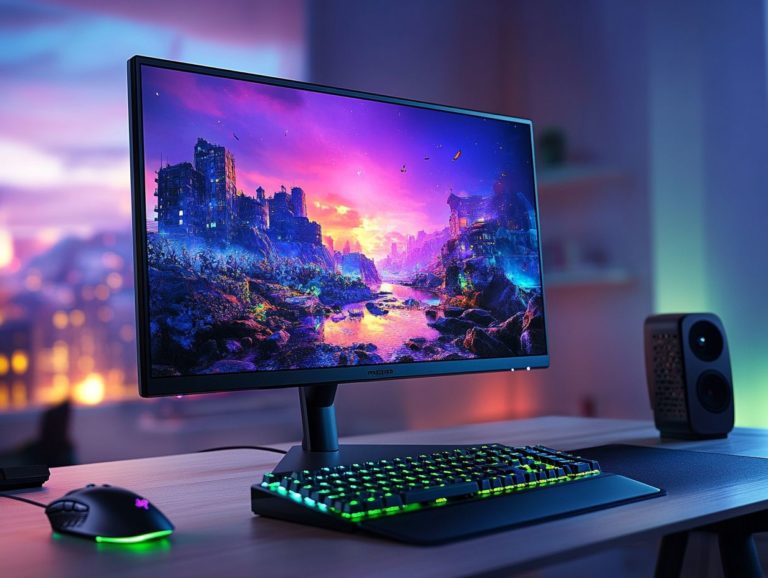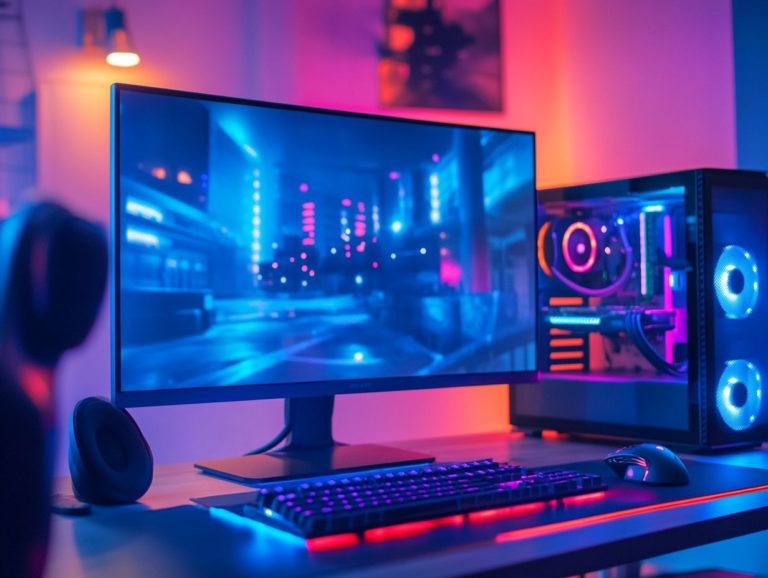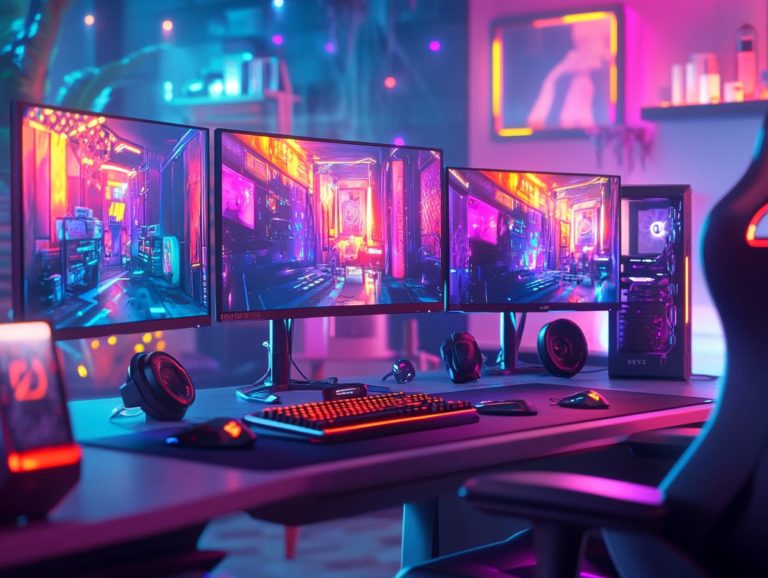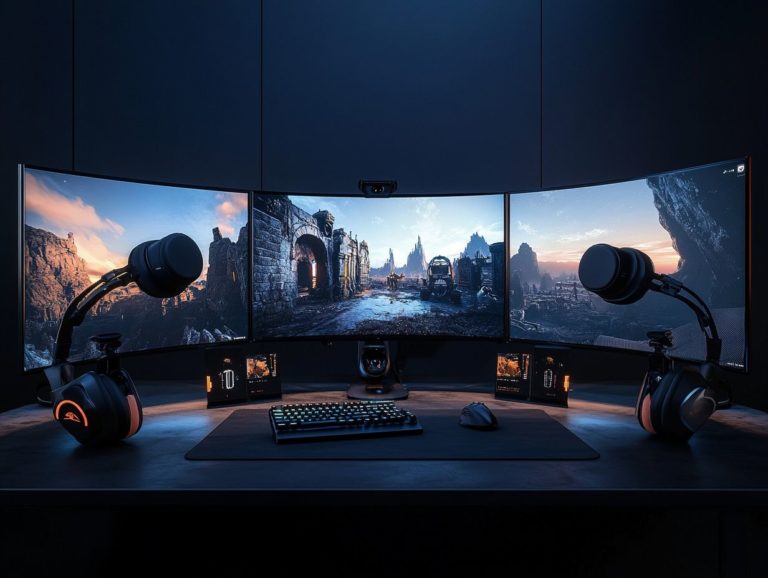how to reduce motion blur on gaming monitors
Motion blur can be a gamer s worst nightmare, obscuring the fine line between triumph and failure. Grasping its causes and effects is essential for achieving an immersive gaming experience.
This article delves into the intricacies of motion blur and its impact on gameplay. It examines both hardware and software elements that contribute to this phenomenon, offers effective strategies to mitigate it, and guides you in selecting the ideal gaming monitor to elevate your performance.
Prepare yourself for a gaming experience defined by clear, sharp action!
Contents
Key Takeaways:
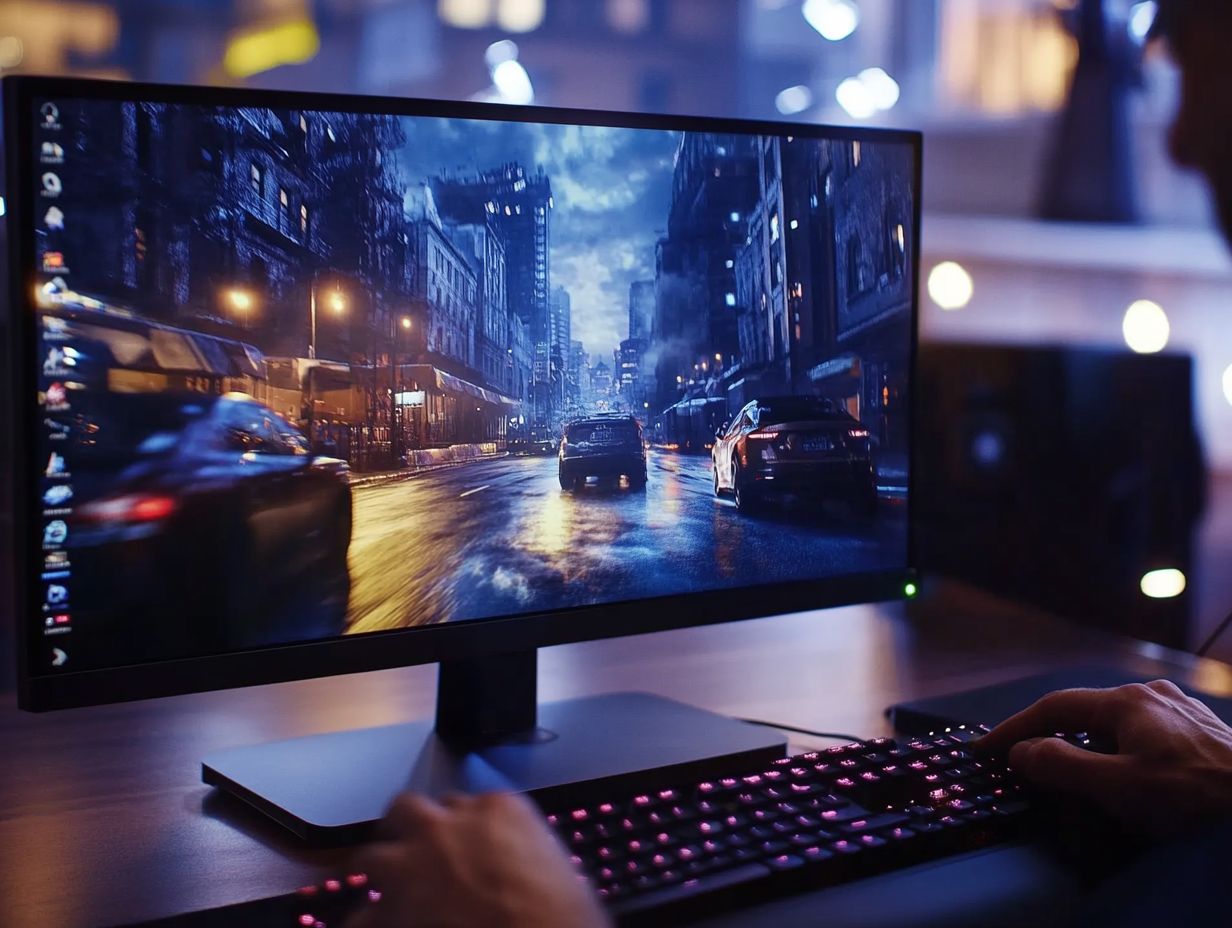
You can significantly reduce motion blur by adjusting your monitor settings and using motion blur reduction technology.
Optimize your graphics settings and position your monitor correctly for a smoother gaming experience.
When choosing a gaming monitor, consider factors like refresh rate and response time to minimize motion blur.
Understanding Motion Blur on Gaming Monitors
Motion blur is an essential element to grasp when considering gaming monitors. It plays a significant role in motion clarity and the overall gaming experience especially in fast-paced scenarios.
This phenomenon occurs when there’s a mismatch between the monitor’s refresh rate how many times per second the monitor updates the image and the pixel response time, which refers to how quickly a pixel can change colors. This results in blurry visuals during quick movements.
Fortunately, technologies like NVIDIA s ULMB and AMD s ELMB can help alleviate this issue by fine-tuning monitor settings. These technologies allow you to immerse yourself in dynamic visuals without the annoyance of motion blur.
This article will explore the causes, effects, and solutions of motion blur in gaming, guiding you in selecting the optimal settings and features for your display.
What is Motion Blur and How Does it Affect Gaming?
Motion blur happens when fast-moving images on gaming monitors appear smeared. Limitations in pixel response time and refresh rate can compromise motion clarity.
This issue can be especially problematic in competitive gaming, where precision and quick reactions are paramount. In high-octane games like ‘Call of Duty’ or ‘Counter-Strike: Global Offensive,’ the sharpness of moving targets can significantly impact your ability to aim and respond decisively.
If your monitor has a high pixel response time, trailing images may stick around longer than you’d like. This makes it tough to spot that sneaky enemy. A low refresh rate leads to choppy visuals instead of the smooth, fluid motion you need.
To gain an edge in gameplay, prioritize monitors with low response times and high refresh rates. Doing so will help minimize motion blur and elevate your overall performance.
Causes of Motion Blur on Gaming Monitors
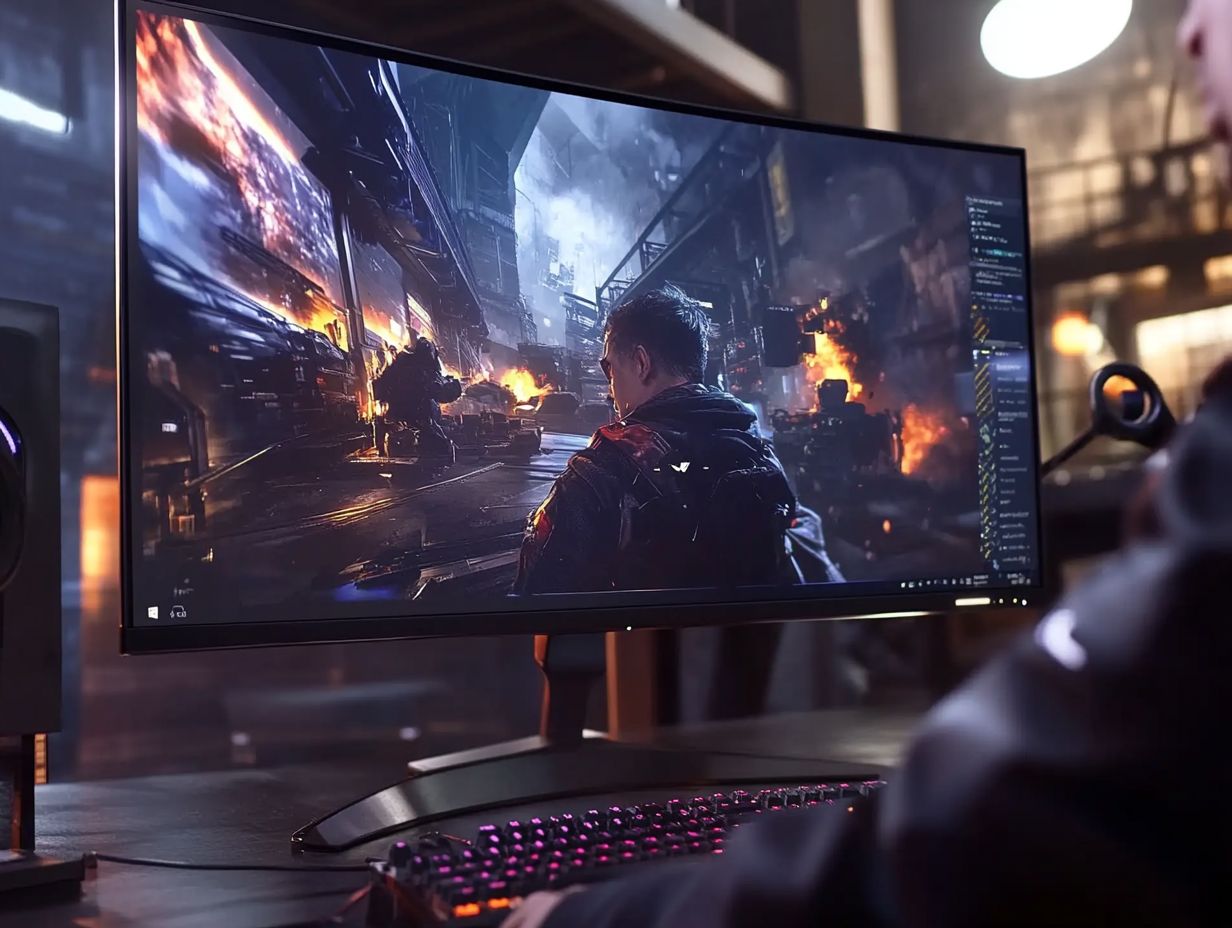
Motion blur in gaming monitors is shaped by a variety of hardware and software elements. It revolves around key factors like monitor response time, pixel response time, and refresh rates all of which dictate how images are rendered during adrenaline-pumping action sequences.
Understanding these components can significantly enhance your gaming experience.
Hardware and Software Factors
The hardware factors influencing motion blur on your gaming monitor include the type of panel you choose, along with specifications like response time and refresh rate. On the software side, game settings and driver optimizations play a crucial role.
Different panel types like OLED, IPS, TN, and VA bring their own unique strengths and weaknesses regarding motion blur. For example, OLED displays are celebrated for their deep blacks and vibrant colors, which contribute to sharper images. Conversely, TN panels can deliver faster response times but often compromise on color accuracy and viewing angles.
Manufacturers such as Alienware and LG are aware of these challenges and have integrated advanced technologies like motion blur reduction and adaptive sync features into their designs.
You can enhance your gaming experience by fine-tuning in-game settings, adjusting graphic quality, or enabling motion blur reduction features on your monitor. This way, you ll create smoother and more immersive gameplay that keeps you fully engaged.
Ways to Reduce Motion Blur on Gaming Monitors
To reduce motion blur on your gaming monitor, adjust your settings and use motion blur reduction technologies. These techniques enhance your visual experience, leading to smoother gameplay and sharper images.
Adjusting Monitor Settings
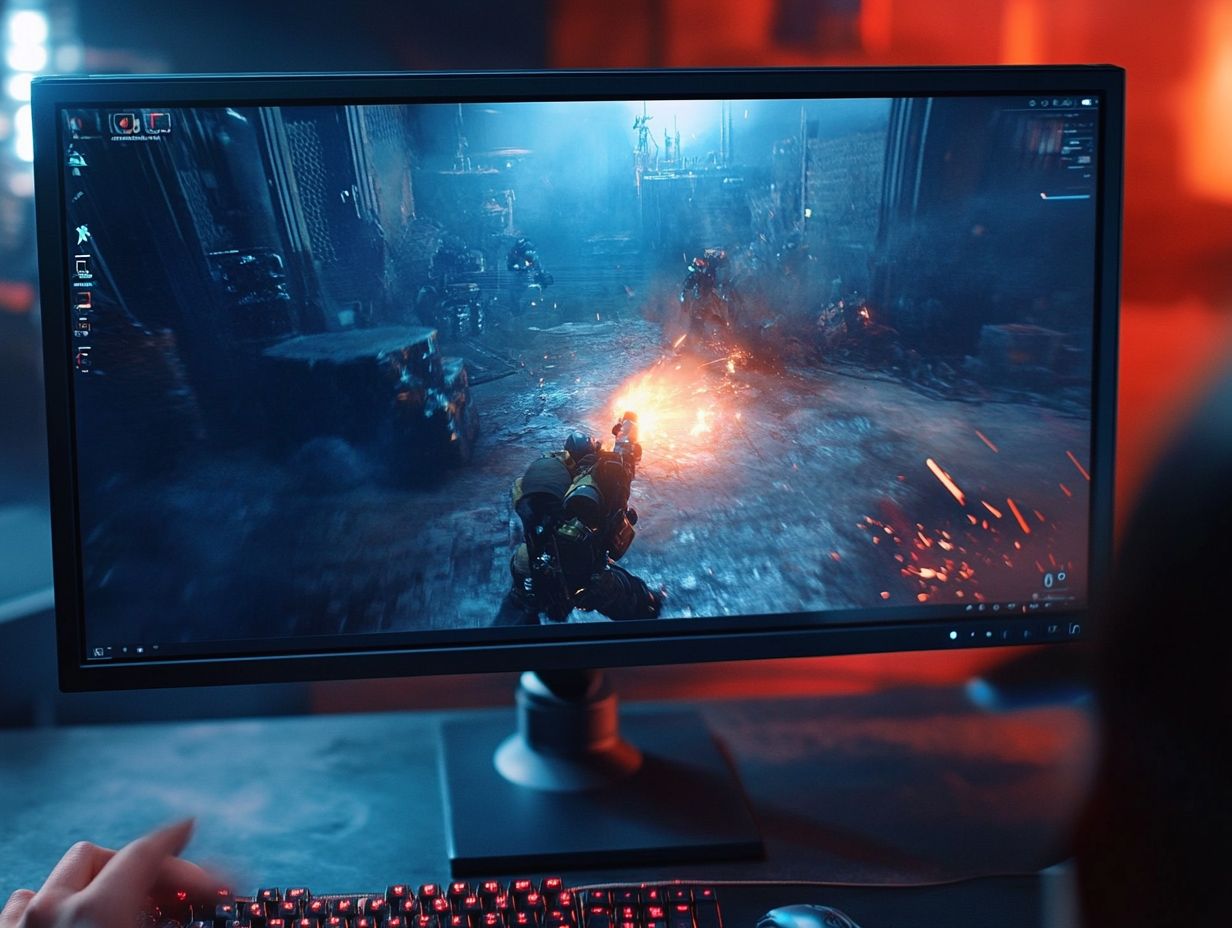
Adjust your monitor settings such as refresh rate, response time, and brightness to improve clarity. These simple changes can elevate your gaming experience significantly.
Brands like Samsung and ASUS offer great customization options. For example, Samsung monitors have an intuitive menu for easy adjustments.
ASUS also provides game modes, allowing quick switching between presets. Finding the right settings is key for top-notch graphics and gameplay.
Using Motion Blur Reduction Technology
Technologies like NVIDIA’s ULMB and AMD’s ELMB help reduce motion blur. They sync your monitor s refresh rates with your graphics card s frame rates, minimizing screen tearing.
These technologies deliver smoother visuals and precision, especially during fast-paced games. Want to learn more? Visit resources like Blur Busters for tips and testimonials!
Other Tips for Reducing Motion Blur
In addition to fine-tuning your monitor settings, you can take your gaming experience to the next level by optimizing your graphics settings. Proper monitor positioning is crucial for minimizing motion blur, allowing you to immerse yourself fully in the action.
Optimizing Graphics Settings
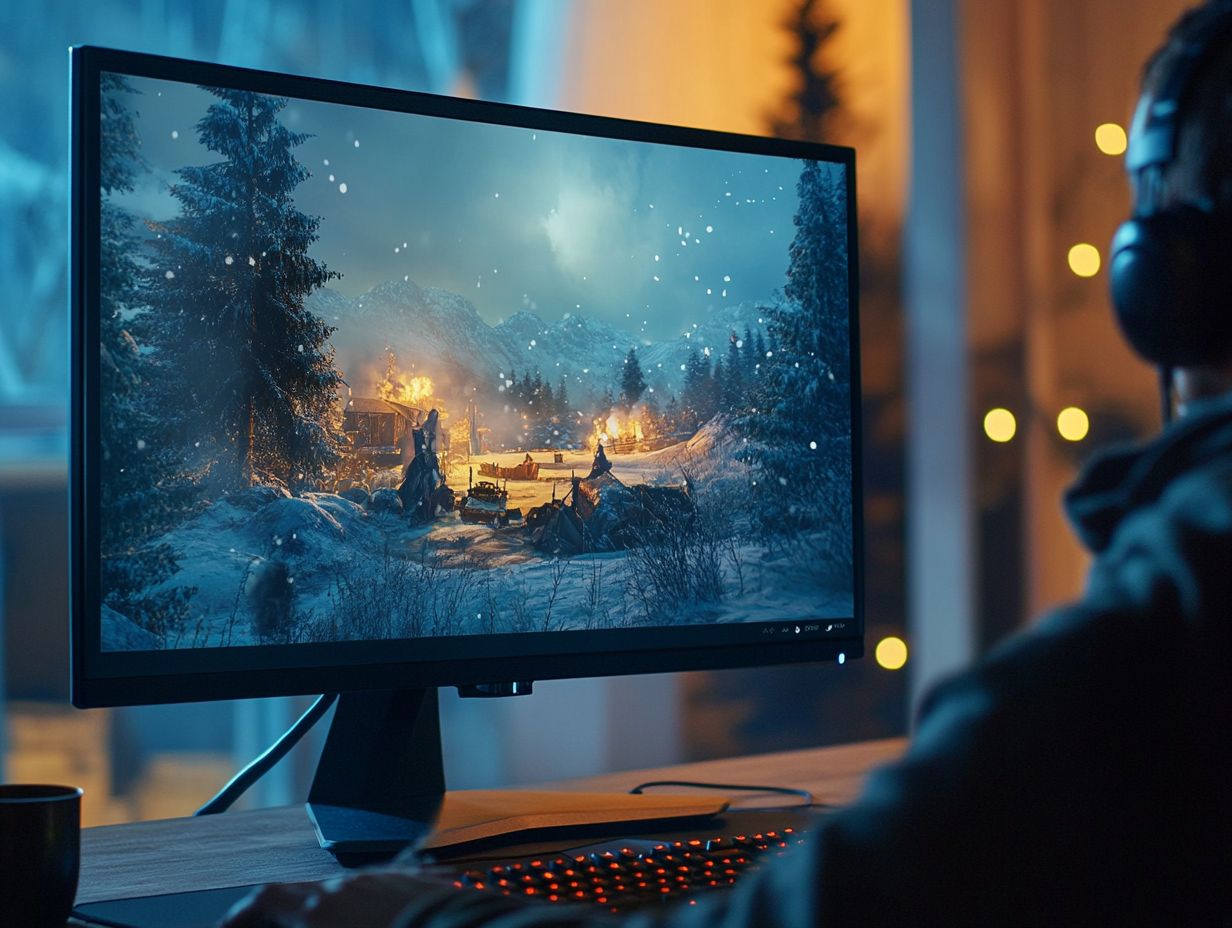
Optimizing your graphics settings is essential for minimizing motion blur and enhancing gaming performance. Fine-tune options like resolution, texture quality, and refresh rates to achieve clarity and fluidity on-screen.
A higher resolution enhances detail but may require lowering texture quality to maintain optimal frame rates. This is especially important in competitive games like “Call of Duty” or “Fortnite,” where every setting impacts gameplay.
Incorporating Variable Refresh Rate (VRR) technology synchronizes your graphics card and monitor, smoothing out inconsistencies from fluctuating frame rates. This reduces motion blur and enriches your overall gaming experience.
Properly Positioning the Monitor
Properly positioning your monitor can elevate your gaming experience and significantly reduce perceived motion blur during gameplay.
Aim to have the screen at eye level, ensuring the top of the monitor aligns with your eyes. This alignment promotes a natural posture that keeps you comfortable.
Maintain a distance of at least 20 to 30 inches from the screen to minimize strain while providing clearer visuals. Adjusting the monitor’s height can make a remarkable difference, helping to prevent neck and eye strain during marathon gaming sessions.
Incorporating an ergonomic chair and maintaining a stable seating position can further enhance your setup, allowing for longer and more enjoyable gaming periods while minimizing fatigue and motion blur.
Try these strategies today and transform your gaming experience!
Choosing the Right Gaming Monitor
When choosing your monitor, focus on key factors to enhance your gameplay! Selecting the perfect gaming monitor is essential for achieving motion clarity and responsiveness in your gaming experience.
Factors like refresh rate, response time, and support for advanced technologies such as G-SYNC and FreeSync significantly influence your gameplay. Investing in a high-quality monitor tailored to these specifications can elevate your performance.
Factors to Consider
When selecting a gaming monitor, consider refresh rate, response time, and panel type. These elements impact your gaming experience and motion clarity.
Understanding how these aspects work together can give you a competitive edge. Refresh rate, measured in hertz (Hz), indicates how often the monitor refreshes the image each second, which is vital for smooth gameplay in fast-paced titles.
Response time shows how quickly a pixel changes color, affecting ghosting effects that can break your immersion. Each panel type OLED, IPS, TN, or VA has unique strengths and weaknesses regarding motion blur.
For instance, OLED panels are known for deep blacks and fast response times, effectively minimizing motion blur. High-end IPS monitors balance color accuracy and quick response times, making them ideal for gamers who value both visuals and performance.
On the other hand, TN panels usually offer the fastest response times but sacrifice color vibrancy, while VA panels excel in contrast but may lag in response speed.
Monitors like the ASUS ROG Swift PG259QN and Dell Alienware AW2521H showcase peak performance, providing a smoother and more immersive gaming experience.
Frequently Asked Questions
What causes motion blur on gaming monitors?
Motion blur on gaming monitors is mainly caused by the display’s response time. A slower response time can make images appear blurry or smudged during fast-paced gaming or action scenes.
How do I check the response time of my gaming monitor?
You can check your gaming monitor’s response time by reviewing its specifications or using a motion blur test tool that measures response time in milliseconds.
Does the refresh rate affect motion blur on gaming monitors?
While a higher refresh rate improves motion smoothness, it doesn’t directly reduce motion blur. Higher refresh rates can make motion blur less noticeable but are not the main factor in eliminating it.
What is the ideal response time for a gaming monitor?
The ideal response time for a gaming monitor is 1ms. This is the fastest response time available and is best for minimizing motion blur during fast-paced gaming or action scenes.
How can I reduce motion blur on my gaming monitor?
You can reduce motion blur by setting the response time to its lowest option. You can also enable motion blur reduction technologies, such as NVIDIA’s ULMB or AMD’s FreeSync, if your monitor supports them.
Are there any other tips for reducing motion blur on gaming monitors?
Yes, adjusting brightness and contrast settings can help. Lowering brightness may reduce motion blur, while increasing contrast can enhance the clarity of fast-moving images on screen.
Don’t miss out on the latest gaming monitors that can revolutionize your gameplay!

